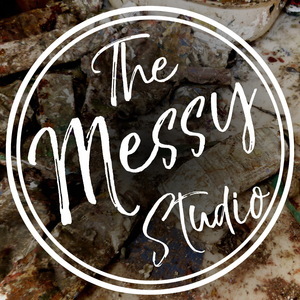Balancing Acts
Episode 110 · February 8th, 2020 · 27 mins 39 secs
About this Episode
We often talk about finding balance with aspects of the creative process that seem to be opposites. For example, finding the balance between working intuitively, and working with control and intention. The way each of us finds this balance between different approaches helps to develop the unique character of our individual work and process.
First of all, we should define what we mean by balance. Obviously, no approach is completely equal. An artist’s personal approach almost always demonstrates a preference for one tendency over another. You may have a strong personal preference, but developed work includes an element of the opposite as counter-balance. Even very intuitive, loosely painted work benefits from structure within the composition.
Often times friends, colleagues, and instructors will push their own preference. In a sincere effort to be helpful, they may insist that working with purpose and intention is the only way to create quality work, or example, or that work without spontaneity lacks emotional depth. Both approaches are equally valid, however.
All of this is part of the balancing act. How much should you pay attention to what other people tell you? This matters to those of us who teach, also. Try to be inclusive of various styles and ways of working. What is right for you may not be right for your student, but you must still be willing to push them to incorporate an opposing element.
Many of these opposing forces exist in our work and our lives. Are you spontaneous, or a planner? Do you prefer learning from an instructor or by figuring it out on your own? Even the most basic elements of design are defined by their opposite. By observing these opposing forces objectively, we can gain clarity. Very often these forces are not truly in opposition. They can work together, and each plays an important role.
The complexities and details of these balancing acts are up to each of us to address in our own work. It can be easy to disregard tendencies that don’t come naturally. We must attempt to incorporate elements and approaches that counterbalance these natural tendencies and provide contrast. At the same time, it is essential that you stay true to what feels right as an artist. This is perhaps the most important balancing act of all!
More Messy Studio:
www.messystudiopodcast.com
www.facebook.com/messystudiopodcast
More From Rebecca Crowell:
www.rebeccacrowell.com
www.squeegeepress.com
